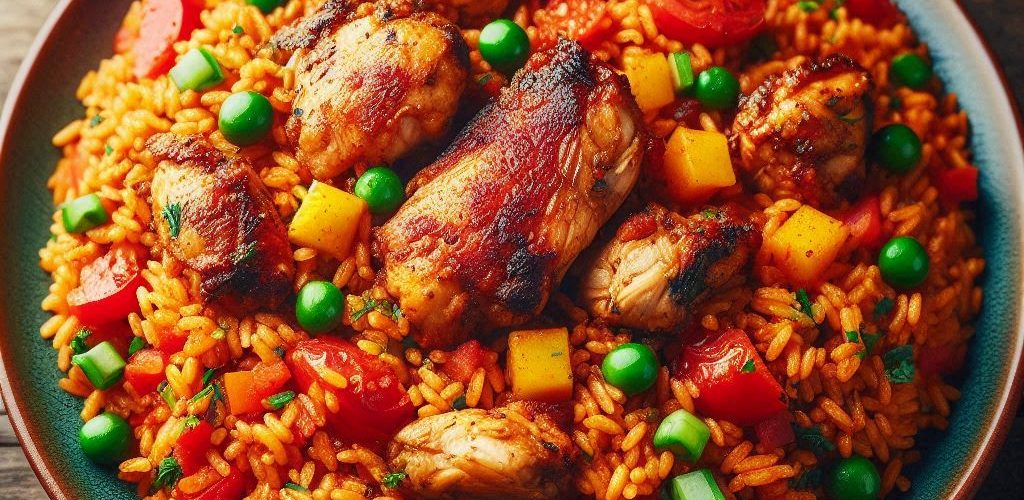One of the most celebrated dishes in Ghanaian cuisine is undoubtedly Jollof rice. This vibrant dish has become synonymous with West African culinary heritage and stands out for its rich flavors and simple yet delicious ingredients. Whether it’s a festive gathering, a casual dinner, or a celebration, Jollof rice is a must-have, and it often takes center stage on the dining table.
At its core, Ghanaian Jollof is made with rice, oil, and a medley of vegetables, all married together with a base of flavorful tomato paste infused with seasonings. The preparation starts with the cooking of rice, which serves as the canvas for the rich combination of ingredients that follows. This dish exemplifies a beautiful balance of flavors, and the secret to its success lies in the quality of the ingredients and the cooking technique.
The base is a blend of fresh tomatoes, onions, and peppers, often pureed to create a sauce. This sauce is then seasoned with spices such as thyme, ginger, and curry powder, providing depth and warmth to the dish. As the sauce simmers, the fragrances waft through the kitchen, tantalizing the senses and setting the stage for a fulfilling meal.
Oil plays a crucial role in the cooking process. Typically, palm oil or vegetable oil is used, giving the rice its distinct orange hue. The oil also enhances the overall flavor, making each grain of rice sumptuous and enjoyable. As the rice cooks in the rich tomato sauce, it absorbs all the incredible flavors, ensuring that every bite is as memorable as the last.
While the base recipe is rather straightforward, variations abound, allowing for regional and personal tweaks. Some may add vegetables like green peas, carrots, or even bell peppers for additional texture and color. Others may choose to include proteins such as chicken, beef, or fish, elevating the dish further. The choice of protein not only complements the flavors but also makes Jollof a complete meal that caters to different palates.
Ghanaian Jollof rice is often served with fried plantains or a side salad, rounding out the meal. The combination of the savory rice with the sweetness of ripe plantains creates a delightful juxtaposition, showcasing the dynamic nature of Ghanaian cuisine.
What makes Jollof rice even more interesting is the ongoing friendly rivalry between Ghana and Nigeria over who prepares the best version. Each country boasts unique methods and flavors, sparking passionate discussions among food enthusiasts. This debate only underscores the dish’s cultural significance and the love that many have for it.
In urban areas of Ghana, Jollof rice is often found at events, from weddings to birthday parties, reminding everyone of the communal spirit of sharing food. It has transcended being just a culinary dish; it’s a celebration of heritage, community, and laughter.
For those who are yet to experience the magic of Ghanaian Jollof, it’s an invitation to savor something truly special. Each mouthful tells a story of tradition, family, and the art of cooking that has been passed down through generations. Whether enjoyed at a bustling street food stall or a home-cooked meal, Jollof rice continues to capture hearts and appetites, making it a staple of Ghanaian gastronomy.




Add comment